Saw palmetto may boost testosterone by blocking its conversion into dihydrotestosterone.
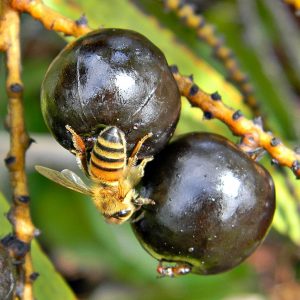
- Increasing testosterone levels. Saw palmetto may boost testosterone (T) by preventing it from converting into dihydrotestosterone (DHT).
- Improving sexual function. One of saw palmetto’s debatable benefits is improvement of sexual function.
Overview
The miniature palm tree, saw palmetto (Serenoa repens), is a tough, long-living plant that commonly grows in dense thickets as undergrowth in pine woods or along sandy coasts. It is native to the Southeastern United States and is especially prominent along Florida shorelines.
For centuries, saw palmetto has been incorporated into traditional herbal medical practices for its rumored health benefits: Mayans took it as a tonic, while Native Americans used it to treat sexual problems and infections.
Contemporary medical research has discovered that saw palmetto may be capable of increasing testosterone levels by reducing its conversion into dihydrotestosterone (DHT), a commonly misunderstood male hormone.1 This effect might also have implications for urinary and sexual health, and saw palmetto has been used as a diuretic and an aphrodisiac (to boost sexual drive), although the true extent of its benefits is still under debate.

How Saw Palmetto Might Help With Testosterone
Blocking the conversion of T into DHT
Testosterone is converted into DHT through the action of the enzyme 5α-reductase.
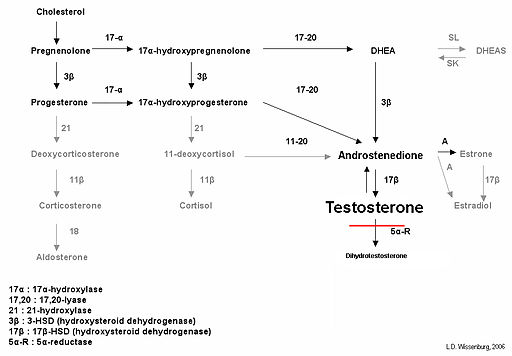
The high long-chain fatty acid content of saw palmetto has been shown to inhibit the activity of 5-α-reductase and consequently increase levels of testosterone relative to DHT.2 3 4
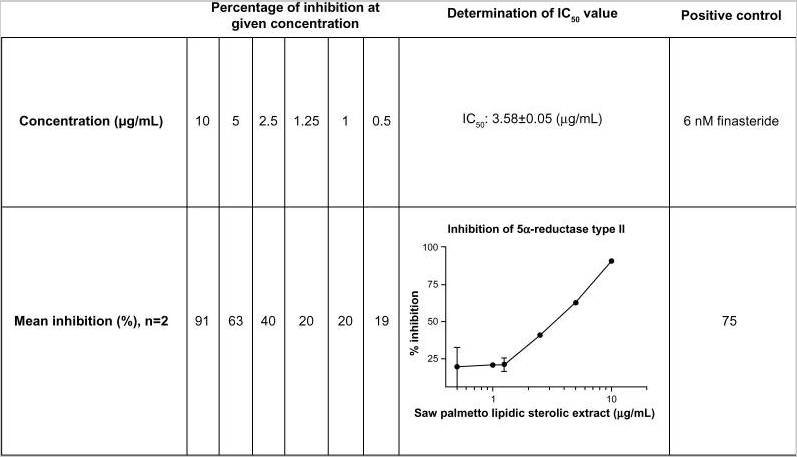
Saw Palmetto Benefits & Uses for Testosterone
The various benefits of saw palmetto are tied to its potential knack for raising T and reducing DHT. Saw palmetto is specifically purported to:
- Manage genitourinary problems, including difficulty urinating5
- Minimize prostate growth in benign prostatic hyperplasia (BPH)6
- Increase sperm count
- Elevate libido
- Limit hirsutism and excessive hair growth7
Saw palmetto has also occasionally been used as an aphrodisiac and to enhance male virility, despite a lack of scientific backing.
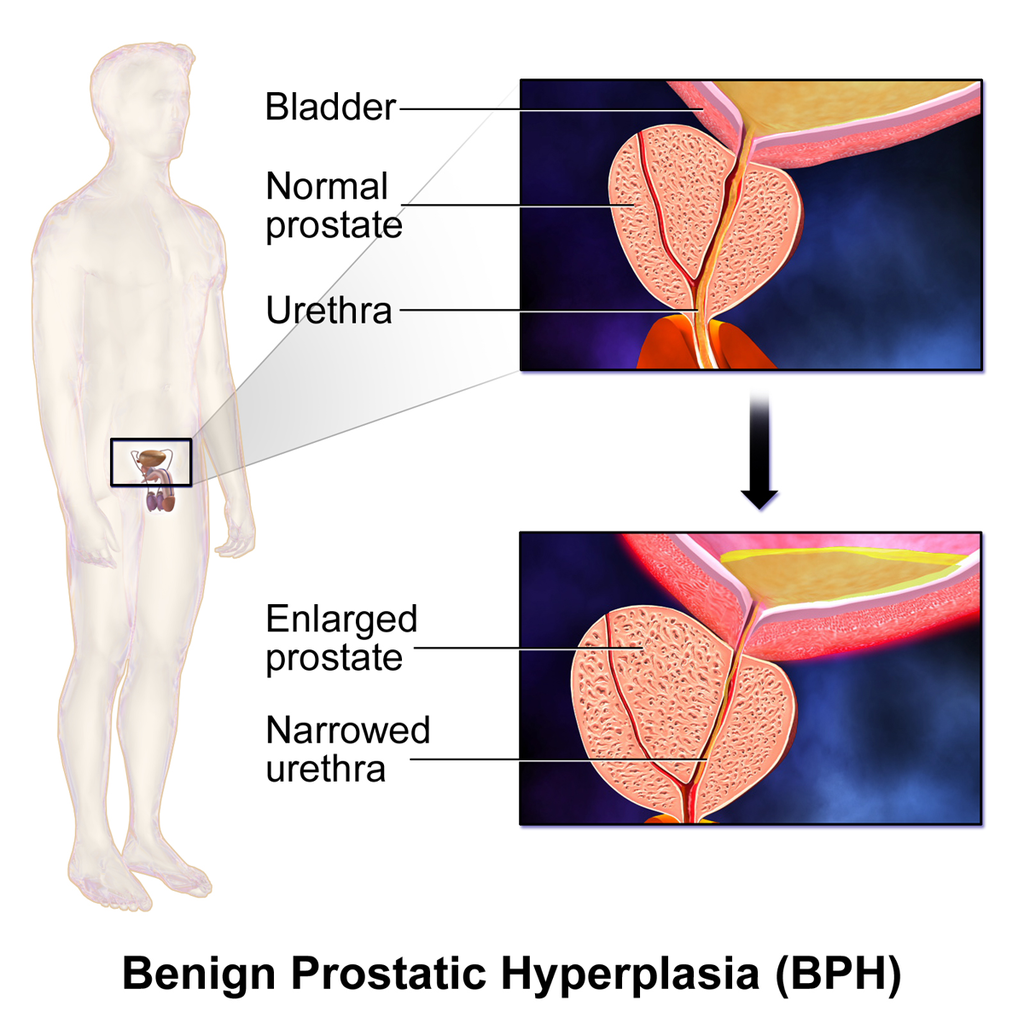
Research
Human Research
Numerous clinical studies have verified the inhibitory impact of saw palmetto on 5-α-reductase, which in turn may increase T levels and reduce DHT levels.
Saw palmetto as Alphastat® (800, 2000 mg) seems to increase testosterone levels
In this investigation, 42 males were given a trademarked saw palmetto extract known as Alphastat® at either 800 milligrams (mg) or 2000 mg per day for a period of 14 days. Data analysis found significant increases in total testosterone levels and decreases in DHT and estrogen in both dosage groups.
- The study concluded that “both dose groups showed significant (p = 0.05) increases in T and decreases in DHT within three days of treatment with Alphastat.”9
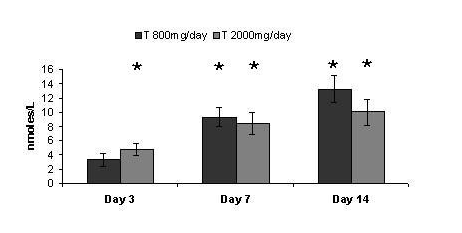
Saw palmetto (800, 1200 mg) combined with astaxanthin may boost testosterone and reduce estrogen
In this randomized, placebo-controlled investigation, 20 males were given a placebo or a natural supplement containing astaxanthin and saw palmetto known as Resettin® at either 800 mg or 1200 mg every day for 14 days. DHT levels were significantly lowered in both dosage groups compared to the placebo. Moreover, the 1200 mg group was found to have reduced estrogen levels along with a 38% increase in testosterone levels.
- The study concluded that “Resettin® can favorably influence serum hormone profiles in men.”10
Saw palmetto as Permixon® (160 mg) may mildly increase testosterone levels
In this randomized, placebo-controlled investigation, 32 males were given either 5 milligrams of a 5-alpha-reductase inhibitor, finasteride, once a day or 80 mg of a saw palmetto extract known as Permixon® twice a day for 7 days. Unlike finasteride, Permixon® was not found to reduce DHT levels. Both treatments were shown to slightly elevate testosterone levels without extending beyond the normal range.
- The researchers concluded that “no significant difference was detected between finasteride and Permixon or between finasteride and placebo with respect to serum testosterone, except on days 3 and 6, respectively.”11
Saw palmetto as Prostasan® (320 mg) may improve sexual function
In this pilot investigation, 82 elderly men with sexual dysfunctions (SDys) and symptoms of BPH took one capsule containing 320 mg of a saw palmetto berry preparation, Prostasan®, every day for 8 weeks. By the end of the trial, the average prostate symptom score dropped from 14.4 ± 4.7 to 6.9 ± 5.2, whereas sexual function significantly improved based on both the Sexual Function Inventory (from 22.4 ± 7.2 to 31.4 ± 9.2) and the Urolife BPH QoL-9 sex total (from 137.3 ± 47.9 to 195.0 ± 56.3).
- The researchers concluded that “this was the first trial with saw palmetto to show improvement in BPH symptoms and SDys as well.”12
In this randomized, double-blind, placebo-controlled investigation conducted at 11 different clinical sites in North America, 369 males over 45 years of age or older were given 1, 2, and then 3 doses of either a placebo or 320 mg of saw palmetto daily for 72 weeks. No significant differences were noted in urinary or sexual function in any of the groups, though erectile and ejaculatory dysfunction slightly decreased in the saw palmetto group.
- The researchers concluded that “increasing doses of a saw palmetto fruit extract did not reduce lower urinary tract symptoms more than placebo.”13
Saw palmetto may improve urologic symptoms and urine flow in males
In this review, 18 randomized and controlled investigations involving 2939 males with varying inclusion criteria were compared and analyzed. Compared to placebo, participants treated with saw palmetto (S. repens) had decreased urinary tract symptom scores, nocturia, and improvement in self-rating of urinary tract symptoms. Saw palmetto supplements resulted in similar improvements in urinary tract symptom scores and peak urine flow to finasteride.
- The researchers concluded that “S repens improves urologic symptoms and flow measures.”14
Dosage for Testosterone
- Successful clinical studies have used from 160 – 2000 mg of saw palmetto, often standardized to 80 – 90% liposterolic compounds.
- Typical supplemental capsules range from 320 – 585 mg of powdered saw palmetto combined with 25% aqueous extract.
Available Forms
- Tablets or capsules
- Aqueous or liquid extract
- Dried berry used as tea
- Ground, dried, or whole berry
Supplements in Review Says
- Saw palmetto at 160 – 320 mg daily for testosterone.
Saw palmetto seems to have minor T boosting potential. Although more research is needed, current findings seem to suggest that saw palmetto may slightly increase testosterone levels. However, it does so at the expense of DHT, which despite its vilification still plays an important role in male health.
Take saw palmetto supplements at 160 – 320 mg per day. The best bet for saw palmetto supplementation appears to be a daily 160 – 320 mg dose in any one of its dried forms.
Leave a Reply